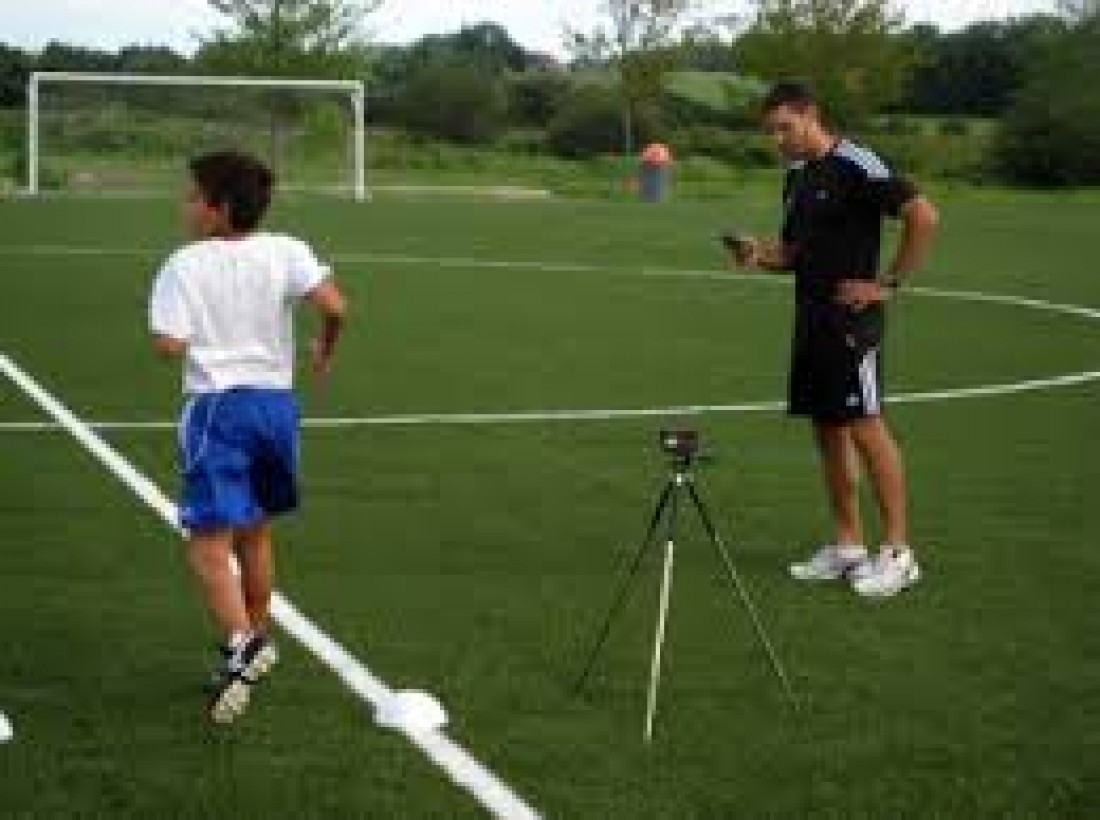The Canadian University Soccer season is here, and this year marks my 3rd season as Assistant Coach and Fitness Coach with the University of Ontario Institute of Technology (UOIT) Ridgebacks Women’s Varsity Soccer Team. This season, I will be blogging every day with a ‘Tip of the Day’ – a small piece of information about the testing, training, monitoring, or performance analysis I am doing with the team.
Today’s Tip of the Day is about assessment of running speed. In modern soccer, running speed is a key determinant of a players’ ability to make the types of plays – outrunning defenders to score goals, or conversely, outrunning attacking players to prevent scoring opportunities, for example – that lead to success in the sport. About six years ago, I was part of a group led by Paolo Pacione (present fitness coach with Montreal Impact in MLS) and Robert Rupf (sports scientist with the Canadian Sport Centre Ontario) which was tasked with designing a soccer-specific fitness assessment protocol for all of the Ontario Provincial and National Training Centre players, comprising elite level boys and girls ranging in age from U14 to U17. When determining which fitness assessments to select for these elite level soccer players, we decided to do some research into what types of assessments were considered the best predictors of performance in soccer, and also which tests were the most applicable to high level youth players. We had a general idea of what physical abilities needed to be tested (speed and endurance in particular) but we wanted to determine which specific types of tests of these abilities were best suited to our environment and players.
For speed tests, we looked into the specific way that speed is used in soccer. In a study done by Di Salvo et. al. (2009), it was found that the average distance of a sprint in elite professional (men’s) soccer was 20 metres. Furthermore, the same study reported that the shortest sprints in professional soccer are between 5 and 10 metres, and the longest sprints are between 30-40 metres. Armed with this data, our group decided to use a speed test protocol that includes a 10 metre sprint (to measure initial acceleration); a 20 metre sprint (to measure the speed of the average sprint distance in soccer); and a 35 metre sprint (to measure the speed of the maximum sprint distance in soccer). I have since adopted this speed testing protocol and am still using it today to assess all the players I work with, including the UOIT Women’s varsity team. Other fitness coaches working with soccer players should also consider these speed tests, as I have found them to be the best way to determine players’ soccer-specific running speed.
I’d love to hear your thoughts about this topic. Drop me a line here to get the conversation started.


Leave A Comment